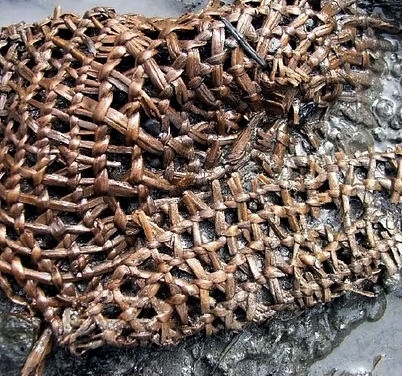
The Chinooks
Historically, the bluff was within the home range of the Chinook tribe, whose territory was the banks of the Columbia River from the mouth, northward up the coast of present-day Washington state and up-river to the historic site of Fort Vancouver. Pre-contact, the rich lands of the Chinook provided an abundance of food - salmon, elk and deer, wapato, camas and acorns to name a just a few. Through this wealth of natural abundance, they were able to live a seasonally nomadic lifestyle, living in permanent cedar plank houses along the banks of the Columbia and its tributaries in the Winter and in temporary shelters in the Summer months while foraging, hunting and fishing.
The Chinook were very instrumental in the shaping and maintainance of the many Oregon Oak and camas meadows, like Liberty Hill, that once dominated the Willamette Valley and Columbia River basin. Through low-intensity burns, usually carried out in the late Summer or Fall, the Chinook and other tribes throughout the Pacific Northwest would "burn out" the Douglas Firs, brush and weeds, which in turn would encourage the camas and oak to thrive and attract game to open prairies. To this day, the presence of the oak, camas, yampah, tarweed and other food and medicinal plants found on Liberty Hill is an indicator that the site was frequented for harvest of these traditional staples .
Today the bluff is a fragment of this vanishing oak and camas landscape and a living legacy of a people whose culture and ways were severely impacted by disease and displacement in the early 19th century.

Paul Kane painting of Chinook people next to their temporary Summer shelter.

Camas digging tool - source - nps.gov
Fragment of a cedar root woven acorn basket from the "Sunken Village" site on Sauvie Island, 16 miles up river from Liberty Hill.
-source- academia.edu - TESTING THE NATIONAL HISTORIC LANDMARK WET SITE 35MU4, THE SUNKEN VILLAGE ARCHAEOLOGICAL SITE, MULTNOMAH COUNTY, OREGON


Oregon White Oak acrons gathered nearby from Nob Hill Nature Park in St. Helens . The tribes soaked and leached out the tannins of the acorns before grinding them into meal.

A camas bulb washed out on a dry basalt streambed. One of millions that have thrived on the bluff for thousands of years.